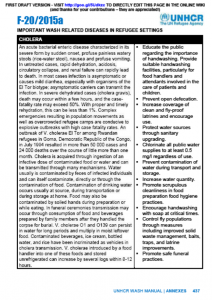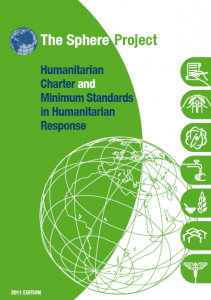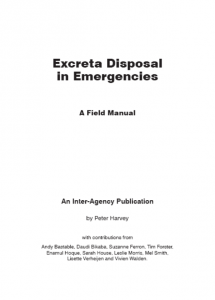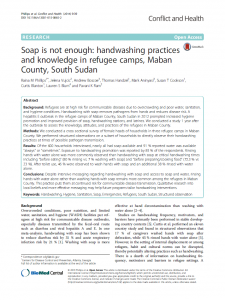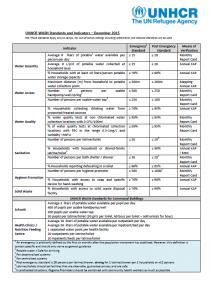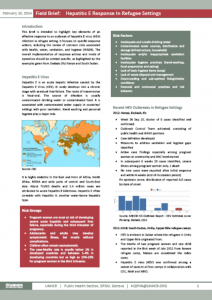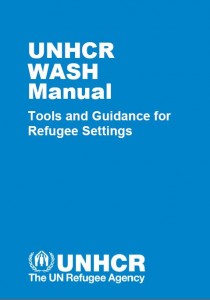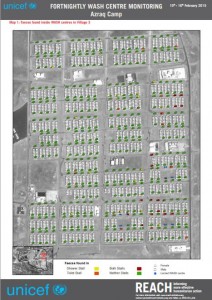This document provides a quick summary of the most important WASH related diseases for refugee settings and includes a list of recommended control strategies.
- Tags: Bloody Diarrhoea, Communicable Disease Control, Excreta Management, Handwashing with Soap, Hygiene Promotion, Public Health, Water Supply, and Watery Diarrhoea. Languages: English. Organisations: UNHCR. Categories: WASH Blank Forms, WASH Guidelines, and WASH Reference Documents.
 English
English

